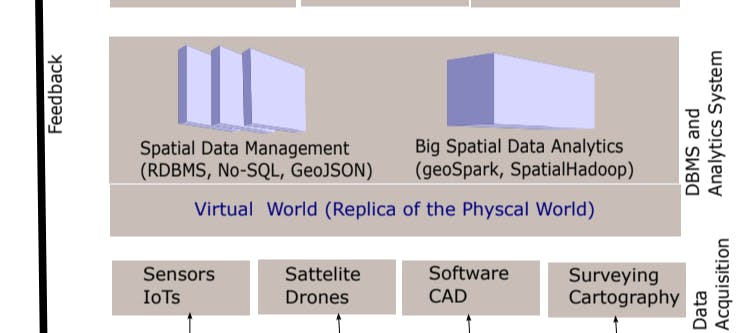#IoT
#IoT
[ follow ]
#cybersecurity #smart-home #edge-computing #ai #artificial-intelligence #privacy #5g #smartphones #roi #funding
fromGSMArena.com
1 week agoXiaomi Q3 report: Xiaomi 17 sales top 15-series, EV division posts first profit
Xiaomi has published its Q3 2025 financial report and the numbers are glowing - this is the fourth consecutive quarter with more than CNY 100 billion in revenue. Xiaomi's smartphone business is well established at this point and it continues to perform - the company shipped 43.3 million units globally, which marks the 9th consecutive quarter of growth. Globally, Xiaomi is in the Top 3 and it is #2 in China.
Gadgets
fromComputerWeekly.com
1 month agoSita unveils next-gen fibre-optic comms for data-intensive airports | Computer Weekly
Air transport industry technology provider Sita has launched a high-speed fibre-optic service that delivers "ultra-reliable", scalable and secure connectivity that could soon bypass copper cables in complex airport environments. The firm believes that to date, bandwidth limitations, high latency and costly maintenance have meant platforms deployed at airports have sometimes fallen short. Technologically, the Sita passive optical network (PON)-enabled fibre infrastructure, optical network terminals and centralised network will collectively deliver "uninterrupted", high-bandwidth connectivity across crowded airports.
Tech industry
fromDaily Coffee News by Roast Magazine
1 month agoThe Maxim's Seine X Offers a River of Features for Home Espresso
The DC motor-driven conical-burr grinder offers eight RPM speed settings and 70 steps of adjustment within the espresso range, accessible through a dedicated touchscreen. Its three modes of operation include manual, grind-by-weight and grind-by-time. The brewing system includes an insulated dedicated brew boiler and a scale in the receptacle platform for brew-by-weight features. Dual 15-bar Ulka pumps and multiple needle valves enable rapid-response pressure profiling within a 3-to-15-bar adjustment range, with up to four flow modes assignable per phase of stable pressure.
Coffee
fromBusiness Matters
2 months agoThe Future of Telecommunications (2025-2030): 5G, 6G, IoT, AI & Security
Most businesses today rely on telecom far beyond simple calls or SMS. The future of the telecom industry is about powering digital communications, cloud services, IoT ecosystems, and enterprise connectivity. Imagine running an e-commerce store in 2025: AI chatbots handle customer service, sales reps close deals over video calls, and logistics teams track shipments in real time via IoT sensors. None of this works without global telecom innovations.
Tech industry
fromArchDaily
2 months agoHow Entrance Systems Are Becoming the Hidden Infrastructure of Smart Buildings
In Jacques Tati's Mon Oncle (1958), architecture itself becomes a character: sliding doors, an automatic fountain, gates that emit mechanical sounds, devices that both enchant and frustrate the inhabitants. The comedy arises precisely from the fact that these seemingly trivial systems silently shape everyday life. More than six decades later, the observation seems prophetic. In contemporary buildings, countless systems work autonomously and discreetly, going unnoticed when they function well.
Artificial intelligence
fromComputerWeekly.com
3 months agoPrivate mobile network deployments return to growth | Computer Weekly
The analyst's Private network deployment tracker contained three defining characteristics of a private network: dedicated resources, including network infrastructure, platform and/or spectrum which may not be physically dedicated but can be logically dedicated such as in network slicing; dedicated user groups/SIMs where access to the network is controlled and limited to a group of certain users who may have logically dedicated SIMs, which may be virtual; and customised KPIs where the network is designed and customised to meet use case requirements that can't be met by best-effort public networks.
Tech industry
fromTechCrunch
3 months agoHubble Network plans massive satellite upgrade to create global Bluetooth layer | TechCrunch
Hubble Network aims to establish a global Bluetooth network through satellite technology, enhancing tracking capabilities and potentially extending device battery life significantly.
Tech industry
European startups
fromComputerWeekly.com
6 months agoMyriota and ETSI team to boost NTN IoT satellite comms standardisation | Computer Weekly
Myriota joins ETSI to enhance satellite connectivity standards for IoT devices.
Standards development will allow for cost-effective satellite communication and increased market adoption.
fromArs Technica
6 months agoWearables firm's endless free hardware upgrades were too good to be true
Whoop published content which most certainly was to influence and convince people to buy the product, that clearly stated there was free upgrades. This has been removed as if it never happened.
Wearables
fromData Matters Privacy Blog
7 months agoMeeting EU Data, Cybersecurity, and Artificial Intelligence Law Obligations: A Checklist for Swiss Life Sciences Companies | Data Matters Privacy Blog
User access to data from connected devices will be crucial, requiring companies to design products for secure direct sharing, with compliance obligations beginning in September 2027.
EU data protection
[ Load more ]











